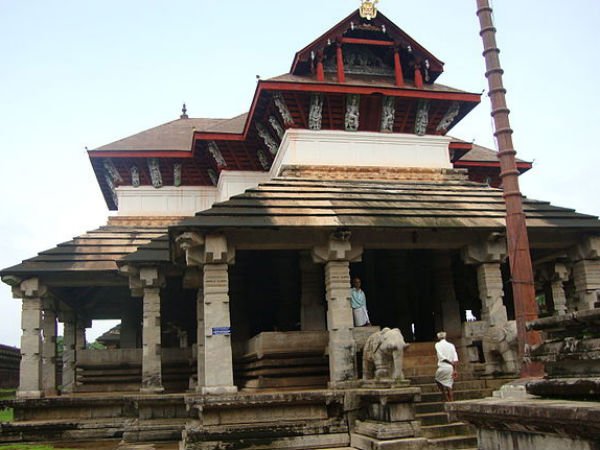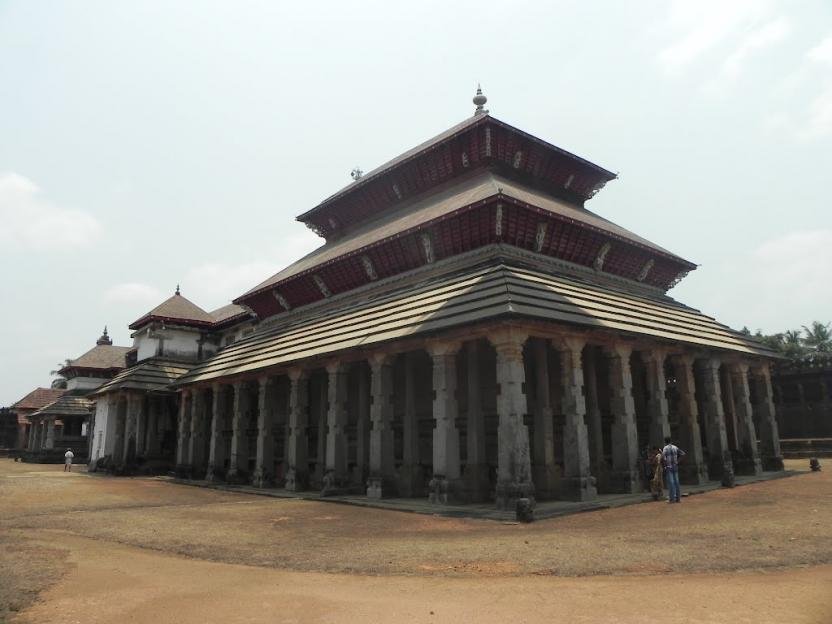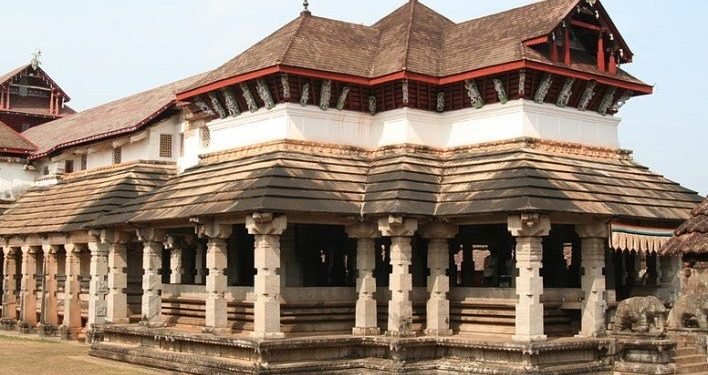Saavira Kambada Temple or Tribhuvana Tilaka Cudamani is a basadi Jain temple noted for its 1000 pillars in Moodabidri, Karnataka, India. The temple is also known as “Chandranath Temple” since it honors the Tirthankara Chandraprabha, whose eight-foot idol is worshipped in the shrine.The town of Moodabidri is noted for its eighteen Jain temples but Saavira Kambada Temple is considered the finest among them.
Shrine’s History
The Basadi was built by the ruler of Vijayanagar, Devaraya Wodeyar in 1430 with additions made in 1962. The shrine has a 60 feet tall monolith manasthambha.

Architectural Relevance of This Shrine
The total construction of the temple took place in three different phases. In the first phase, the sanctum sanctorum was constructed. This contained the idol of Chandranath, which is eight feet tall in height. In the second phase, the magnificent prayer hall was built where a number of beautifully carved pillars were placed. In the last phase, the construction of the Manasthamba took place. It is sixty foot tall and is a centrepiece of the temple. The Saavira Kambada temple also contains many mantapas, which are supported by the pillars. Carved out of granite, these pillars have unique figures engraved that make them different from the others. There are stone chandeliers in the shrine that reveal the architectural skills of the craftsmen. The architecture of the temple shows Jains eye for details and the interaction and exchange of culture among man and nature.

Shrine’s Map Location and How to Go There
By Road
Moodabidri is around 3 kilometres away from Mangalore. Mangalore and Bangalore airports are the two close by airports. One can hire a taxi or board onto a private or government run buses from the airport to Moodabidri.
By Rail
The nearest is railway station is Mangalore
By Air
The nearest Airport is Bangalore
Events Celebrated at This Shrine
Mahavir Jayanti
Extra Information About this Shrine
The stories of the pillars Standing in the courtyard, every visitor experiences the grandeur and vigor that has come to stand as the hallmark of an era long lost in the sands of time. The temple boasts of many mantapas, each one supported by pillars. The pillars carved from granite have stories carved on each one. Every pillar is unique and the figures carved on them are unique. With so much beauty to behold, some visitors are intrigued while the plebeians will simply look at a few and move on to the next sight to behold. Even as the pillars and the carvings attract your attention, there is a fascinating hush of silence and peace that envelops the temple. The intricate carvings and geometrically accurate lines speak of craftsmen whose skills can dumbfound todays machines in the blink of an eye. Stone chandeliers that seemingly defy gravity and other such architectural marvels form a part of the landscape of the temple and never fail to boggle the modern mans mind. The inherent patience of the craftsmen evident in the intricacy of the carvings is an anti-thesis to the constant hustle and bustle of the city. They might just inspire you to slow down and savour the art, as it were. Tales of history, exchanges of culture and the interaction between man and nature is all carved in plain sight for everyone to see. Mythical tales of animals mingle with carvings of African giraffes and Chinese carvings harking back to a time of prosperous commercial trade routes between continents.






































